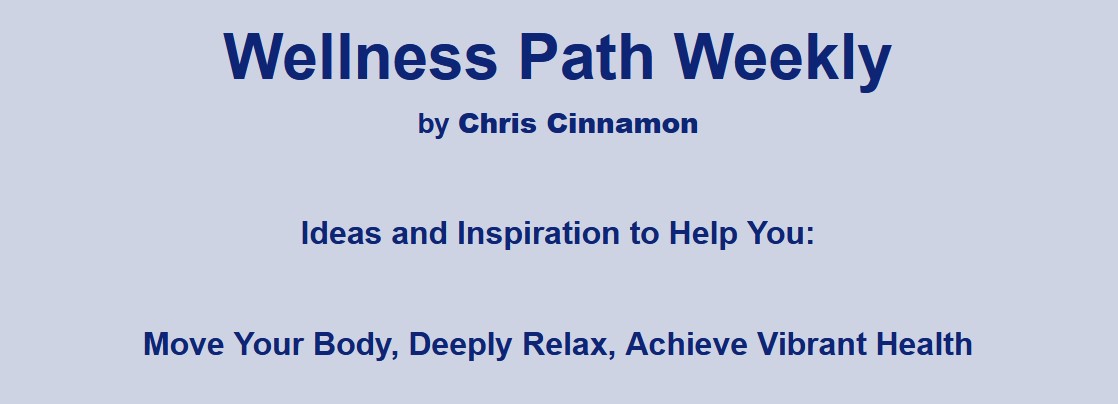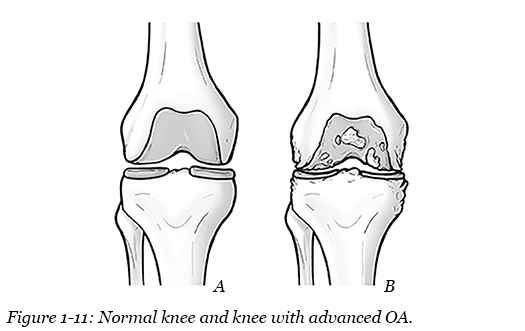
17 November 2022
How To Save Your Knees
Choose the Right Exercise
Today's WPW considers a topic that's important to me personally and professionally— the #1 cause of knee pain in adults, knee osteoarthritis (knee OA).
And how to save your knees from the debilitating consequences of knee OA.
If you experience knee pain, you want to read this.
If you don't currently experience knee pain, that's great. But consider the following.
In the US—
- 14 million adults have symptomatic knee OA. "Symptomatic" means they have knee pain from OA.
- Knee OA currently affects 19% of adults aged 45 and older.
- Women are more likely than men to suffer from knee OA.
- Research suggests the prevalence of knee OA has doubled in the past 70 years.
- One study estimates that nearly half of adults today will develop knee OA in their lifetime.
If you're knees are pain-free and you want to keep it that way, this is for you too.
My Interest in Knee OA
I'm personally interested in knee OA because I'm one of those 14 million adults with it.
For years, my knees hurt. Sometimes a lot.
Decades of high-impact athletics, multiple injuries, and multiple surgeries, and eventually, knee OA, will do that.
Fast-forward to today. My knees are pain-free. I want to keep it that way.
My professional interest in knee OA springs from my book, Tai Chi for Knee Health: The Low-Impact Exercise System for Eliminating Knee Pain (2019).
The book and my Tai Chi for Knee Health courses have helped thousands of people around the globe, most of them with knee OA, restore knee health and enjoy moving again.
So I keep an eye on developments on knee OA science and treatment.
What is Knee OA?
Knee OA involves the breakdown of knee cartilage. That's the thin, smooth layer of tissue that cushions and protects the inside of our joints.
When healthy, that cartilage helps our joints move, virtually friction free.
The problems begin when that cartilage sustains damage or otherwise begins to breakdown. Knee OA follows.

The main symptom of knee OA is pain. Then loss of function. You can't move like you used to.
The typical progression of knee OA is a downward spiral. Pain leads to reduced function. Reduced function weakens the joint. Weakening the joint leads to more pain. Leading to more loss of function.
Increasingly, this spiral leads to major surgery, a knee replacement. Currently, 800,000 knee replacements are performed annually in the US.
A successful knee replacement can provide profound relief for a person with late stage knee OA. But they wear out. Requiring more surgery.
How to Save Your Knees
To save your knees, medical experts, backed by substantial research, provide a consistent answer—
Exercise
To put a finer point on that, the right kind of exercise. Low-impact, therapeutic exercise.
Dr. Timothy Gibson, a California-based joint replacement specialist, recently quoted in a Washington Post article on OA, says, "Exercise ... is the most important nonsurgical treatment out there to treat osteoarthritis."
That leads to a question— what kind of exercise?
In the same article, Dr. Elaine Husni, vice chair of Rheumatic and Immunologic Diseases at Cleveland Clinic, recommends one specific type of exercise for OA patients— Tai Chi.
Why do experts recommend Tai Chi? The science.
Multiple research studies have shown that Tai Chi training reduces pain and increases function in knee OA patients. (Chapter 1 of Tai Chi for Knee Health includes a summary of this research.)
I know Tai Chi transformed my knee health. And continues to keep my knees pain-free today. The arthritis is still there. But not the pain.
I developed my Tai Chi for Knee Health program around that experience. And the supporting science.
How Does Tai Chi Save Your Knees?
Three unique aspects of Tai Chi combine to restore knee health and eliminate pain.
1. Precise Knee Alignments
When proper instruction, in Tai Chi you learn how to precisely align your knees through increasingly dynamic movement.
Precise knee alignments balance the forces going through your knees, rather than concentrating those forces on parts of a knee that may include damaged cartilage.
This reduces irritation and pain, and creates an environment where your knees can strengthen and heal.
2. Gradual, controlled, complete weight shifts
In Tai Chi, like most of life, we constantly shift weight from one leg to the other. But the way we shift weight is unique.
In Tai Chi, you shift weight gradually, in a smooth controlled fashion, until all, or nearly all, of your weight is on one leg. Then you gradually, smoothly shift weight to the other leg.
This action gently compresses, then releases the cartilage in the knee, stimulating circulation of fluid in and out of the cartilage. This nourishes the tissue, strengthens it, and improves its health.
3. Developing strong legs and hips
Tai Chi helps you develop strong legs and hips, without the high-impact pounding of other types of exercise. Increasing leg and hip strength helps take pressure off the knee joint, further easing the forces going through the knee.
Taken together, these three unique aspects of Tai Chi hold the key to restoring, or maintaining knee health, and reducing, even eliminating, the pain of knee OA.
So to save your knees, choose the right exercise. Ample evidence points to Tai Chi.

Chris Cinnamon, JD, MS
Certified Exercise Physiologist
Head Instructor
Author, Tai Chi for Knee Health